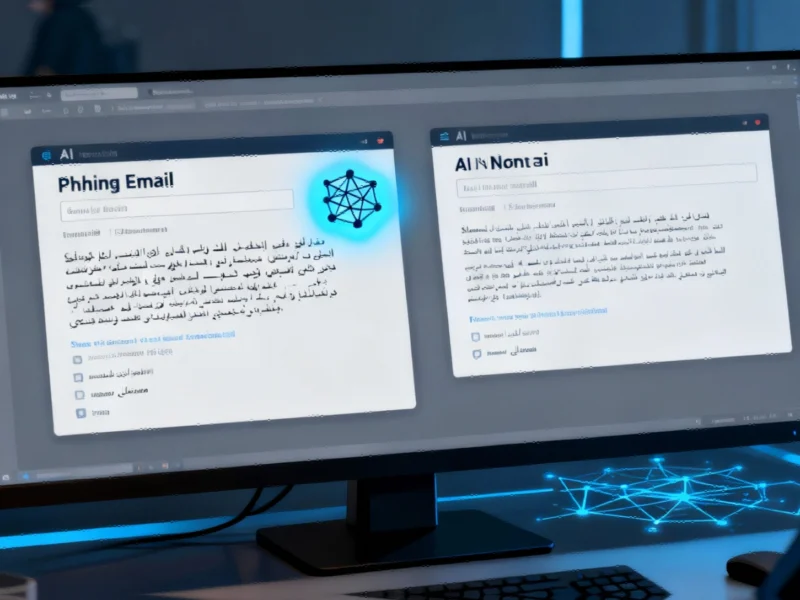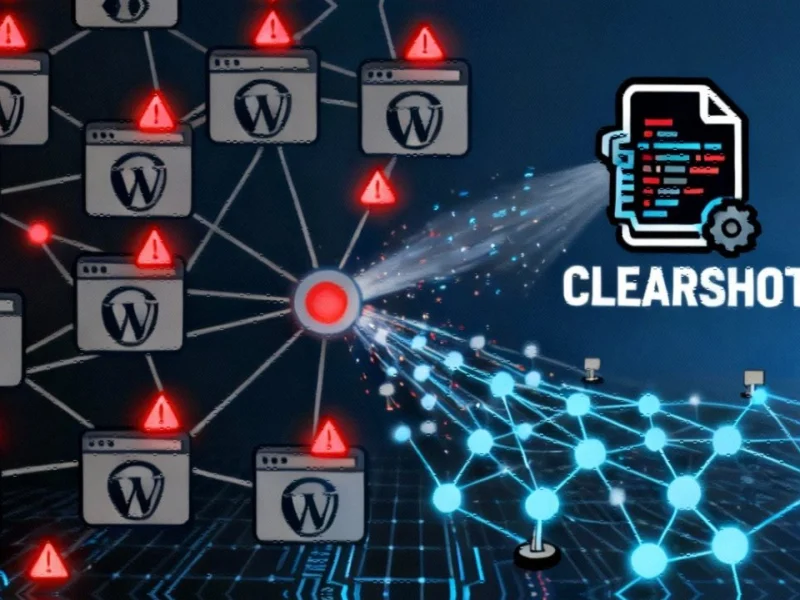AI Revolutionizes Cybercrime Economics
Microsoft’s latest Digital Defense Report reveals a staggering transformation in phishing effectiveness, with AI-automated campaigns achieving click-through rates of 54% compared to just 12% for traditional phishing attempts. This represents a 4.5-fold increase in success rates, fundamentally changing the economics of cybercrime. The dramatic improvement in phishing effectiveness underscores how AI-powered phishing attacks are reshaping the threat landscape that industrial computing professionals must now navigate.
The financial implications are equally concerning, with Microsoft estimating that AI potentially increases phishing profitability by up to 50 times. “This massive return on investment will incentivize cyber threat actors who aren’t yet using AI to add it to their toolbox in the future,” Microsoft warned in its 2025 report, covering the period from July 2024 through June 2025.
Beyond Email: AI’s Expanding Attack Surface
AI’s impact extends far beyond crafting convincing phishing emails. Cybercriminals are leveraging artificial intelligence to automate vulnerability scanning, conduct reconnaissance for social engineering attacks, and even create sophisticated malware. The technology has also introduced entirely new attack vectors, including voice cloning, deepfake videos, and exploitation of large language models themselves.
This technological shift comes as major tech companies continue advancing their AI capabilities. Apple’s recent M5 chip announcement promises to accelerate on-device AI processing, potentially offering new security benefits while also presenting new attack surfaces that industrial system administrators must consider.
Nation-State Actors Embrace AI Capabilities
The AI revolution isn’t limited to financially motivated cybercriminals. Nation-state actors have increasingly incorporated artificial intelligence into their cyber influence operations, according to Amy Hogan-Burney, Microsoft Corporate VP of Customer Security and Trust. “This activity has picked up in the past six months as actors use the technology to make their efforts more advanced, scalable, and targeted,” she noted in a blog accompanying the threat report.
The statistics reveal a dramatic acceleration: from zero documented samples of AI-generated content from government-backed groups in July 2023, the number surged to 50 by July 2024, approximately 125 samples as of January, and around 225 by July. This rapid adoption has prompted multi-state coalitions to take legal action aimed at preserving digital security standards across jurisdictional boundaries.
Financial Motivation Dominates Attack Landscape
Despite the growing sophistication of nation-state operations, most organizations face more immediate threats from financially motivated cybercriminals. Microsoft’s data shows that at least 52% of all attacks with known motives were driven by financial gain, while espionage-only attacks—typically associated with nation-state groups—comprised just 4%.
When Microsoft’s incident responders could determine attacker objectives, the breakdown revealed: 37% involved data theft, 33% involved extortion, 19% used attempted destructive or human-operated ransomware attacks, and 7% focused on infrastructure building for future attacks. This criminal activity occurs against a backdrop of major technology companies reevaluating their product strategies in response to evolving market and security conditions.
ClickFix Emerges as Dominant Attack Method
The report highlights ClickFix as the most significant new attack technique observed during the reporting period. This social-engineering method tricks users into executing malicious commands on their own machines, often disguised as legitimate fixes or prompts, effectively bypassing traditional phishing defenses.
“ClickFix was the most common initial access method that Microsoft Defender Experts observed in Defender Expert notifications in the last year, accounting for 47 percent of attacks,” according to the report. For comparison, traditional phishing ranked second at 35%. This evolution in attack methodology coincides with major platform interface updates across the digital ecosystem that attackers are quick to exploit.
Multi-Stage Attack Chains Replace Simple Phishing
Microsoft describes a “sharp change in how threat actors achieve initial access” compared to previous years. Rather than breaking in, criminals are increasingly logging in through sophisticated multi-stage attack chains that combine technical exploits, social engineering, infrastructure abuse, and evasion through legitimate platforms.
One sophisticated example documented in the report combined email bombing, voice-phishing calls, and Microsoft Teams impersonation to enable attackers to convincingly pose as IT support and gain remote access. Email bombing—flooding an inbox with thousands of subscription emails to hide critical alerts—has evolved from being a smokescreen to a first-stage attack vector in broader malware delivery chains.
As attackers refine their techniques, browser developers are integrating AI search capabilities that could potentially help users identify suspicious content, while simultaneously creating new integration points that attackers might target.
The New Attack Methodology: Email Bombing to Remote Access
The report details how email bombing now frequently serves as a precursor to vishing or Teams-based impersonation. Attackers contact targets posing as IT support, offering to resolve the email flooding issue. Once trust is established, targets are guided into installing remote access tools, enabling attackers to gain hands-on-keyboard control, deploy malware, and maintain persistence.
This sophisticated approach demonstrates how attackers are leveraging multiple communication channels and social engineering techniques to bypass traditional security measures. The evolution comes as operating system updates continue to reshape developer workflows and security postures across industrial computing environments.
Microsoft’s findings underscore the urgent need for organizations to adopt multi-layered security approaches that address both technical vulnerabilities and human factors, particularly as AI-powered attacks become more sophisticated and financially rewarding for cybercriminals.
Based on reporting by {‘uri’: ‘theregister.com’, ‘dataType’: ‘news’, ‘title’: ‘TheRegister.com’, ‘description’: ”, ‘location’: {‘type’: ‘country’, ‘geoNamesId’: ‘6252001’, ‘label’: {‘eng’: ‘United States’}, ‘population’: 310232863, ‘lat’: 39.76, ‘long’: -98.5, ‘area’: 9629091, ‘continent’: ‘Noth America’}, ‘locationValidated’: False, ‘ranking’: {‘importanceRank’: 277869, ‘alexaGlobalRank’: 21435, ‘alexaCountryRank’: 7017}}. This article aggregates information from publicly available sources. All trademarks and copyrights belong to their respective owners.



